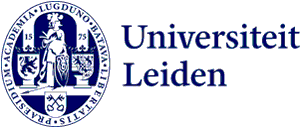
Patchwork of police checks across Schengen area
The Schengen countries officially abolished border controls, but checks actually still exist. Maartje van der Woude has written a book about these veiled border controls: ‘The danger is that Schengen will have lots of borders, just not visible ones.’

Migration is a hot topic. Here in the Netherlands, the current government is committed to achieving the ‘strictest admission regime for asylum ever’. Maartje Van der Woude, Professor of Law and Society, has been studying migration flows over a period of many years. We spoke to her about her new book ‘The Mobility Control Apparatus. Getting to the Core of Crimmigration in the Schengen Area’, the result of research spanning a decade into police checks along the intra-Schengen borderlands.
Let’s remind ourselves: what was the aim of the Schengen area?
‘"Schengen" refers to the countries that signed the Schengen Convention. The intention was that internal border controls between these countries would be abolished. Instead, there would be open borders for people, goods and services. Residents from these countries, for example, could travel freely within the Schengen area without facing border controls and having to show identity documents.'
'Migration – a natural phenomenon – in recent decades seems to be lumped together with other issues such as security and housing.'
Did Schengen countries actually abolish all border controls?
'No, my research shows that some form of surveillance definitely remains. Actually – even from the very first day – some Schengen countries demanded that they would still be allowed to carry out police checks instead of fixed border controls. As a result, these countries were given a great deal of freedom: as long as the checks weren’t veiled border checks, it was fine. They had to be “spot checks”, so checks done on an occasional basis. But what are we seeing now? Countries are most certainly keeping a close eye on the internal borders. In fact, this is being done to the extent that you could wonder whether these occasional police checks are not veiled border controls. My book shows how the Schengen countries use this freedom to carry out police checks in various ways. The danger is that Schengen will have lots of borders, just not visible ones to everyone.'

Do you think public discourse on migration is hardening?
‘Yes, my book draws attention to the ease with which migration – a natural phenomenon – in recent decades seems to be lumped together with other issues such as security, employment, housing, health, etc. People view migration as being the root of problems in these areas.
The book’s subtitle contains the word “crimmigration”. This is a well-known concept within the subfield of criminology and sociology of law in which migration control and border control are central. The term shows how migration law and criminal law are increasingly linked (“crime” and “migration”). It also reflects how migration issues and concerns about migration are increasingly linked to issues and concerns about crime and security.'
Which countries belong to Schengen?
There are 29 Schengen countries. These are all EU Member States, less Cyprus and Ireland, as well as four non-Member States Iceland, Liechenstein, Norway and Switzerland.
This book is the outcome of a decade of research. Did you envisage ten years ago that this would be the end result?
‘No, this project has been an organic process that just got bigger and bigger. In the beginning, I just wanted to understand what was going on along the Dutch border areas. At the time, I was discouraged from doing so because apparently it would be too difficult to get the right information and speak to the organisations responsible for the police checks. I was told I wouldn’t be able to fully grasp the world of police surveillance at the borders. I'm always up for a challenge and now I have my book to show for it!'
The book ‘The Mobility Control Apparatus. Getting to the Core of Crimmigration in the Schengen Area’ is available now and can also be read via open access (with a creative commons licence).
